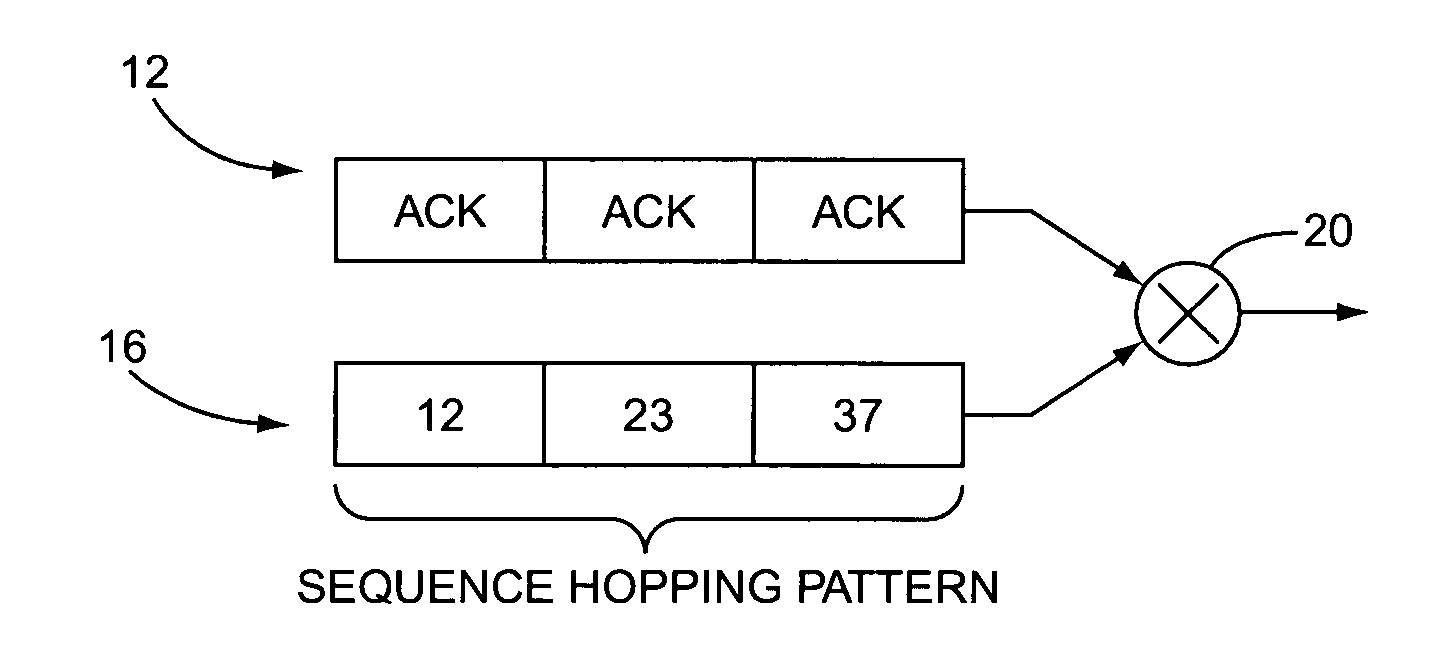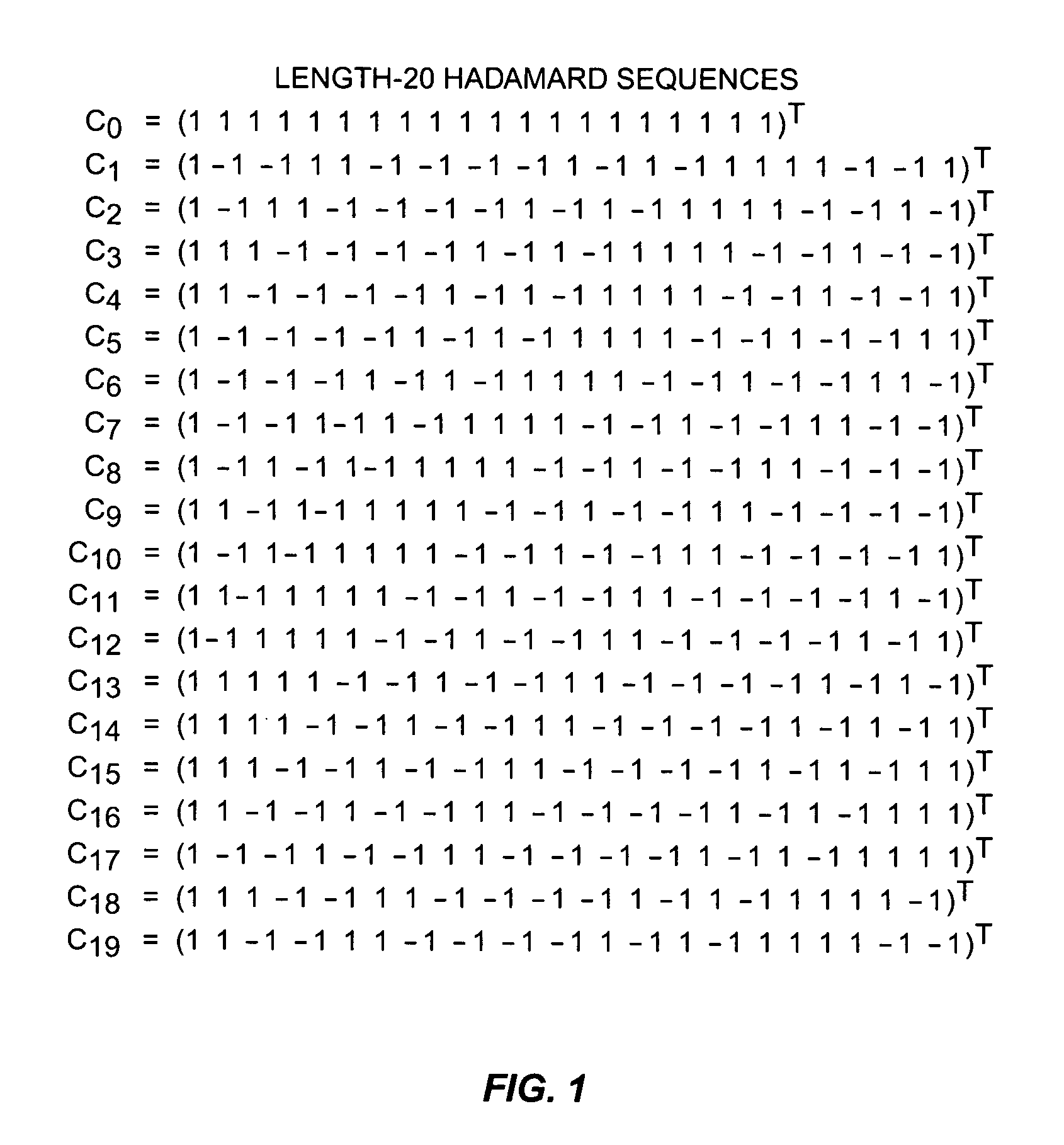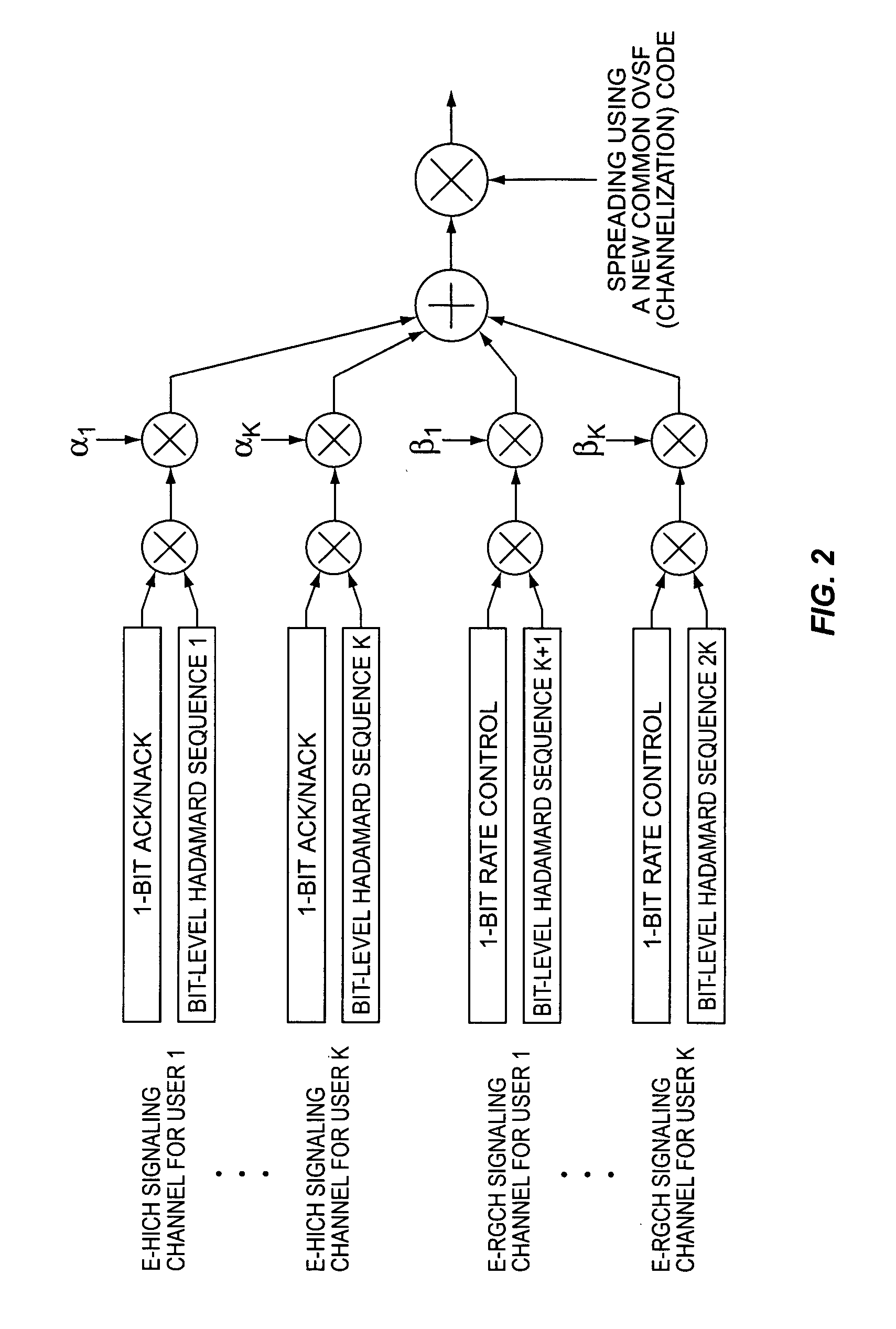Method and apparatus for spreading sequence hopping in code-multiplexed control channels
a control channel and sequence hopping technology, applied in the field of code-multiplexed control channels, can solve problems such as reducing the effects of the above-described near
- Summary
- Abstract
- Description
- Claims
- Application Information
AI Technical Summary
Benefits of technology
Problems solved by technology
Method used
Image
Examples
Embodiment Construction
[0024] For purposes of clarity but not restriction, the following description uses the term “OVSF channelization code” for the spreading sequence that spreads an input signal to the WCDMA chip rate (3.84 Mcps). Further, the following description uses the term “Hadamard sequence” or “bit-level spreading sequence” or “bit-level Hadamard sequence” interchangeably to represent the spreading sequence applied to the control signal at the bit-rate. The bit rate, for example, is equal to the chip rate divided by the spreading factor for BPSK and is equal to two times the chip rate divided by the spreading factor for QPSK. As an example, an OVSF channelization code having a spreading factor of 128 gives rise to 20 symbols in a WCDMA-slot. The resulting bit-level spreading sequence is thus based on Hadamard sequences of length 20.
[0025] According to the current state-of-the-art concept for Enhanced Uplink, a mobile station may transmit in the uplink without scheduling grant as long as the tr...
PUM
 Login to View More
Login to View More Abstract
Description
Claims
Application Information
 Login to View More
Login to View More - R&D
- Intellectual Property
- Life Sciences
- Materials
- Tech Scout
- Unparalleled Data Quality
- Higher Quality Content
- 60% Fewer Hallucinations
Browse by: Latest US Patents, China's latest patents, Technical Efficacy Thesaurus, Application Domain, Technology Topic, Popular Technical Reports.
© 2025 PatSnap. All rights reserved.Legal|Privacy policy|Modern Slavery Act Transparency Statement|Sitemap|About US| Contact US: help@patsnap.com



